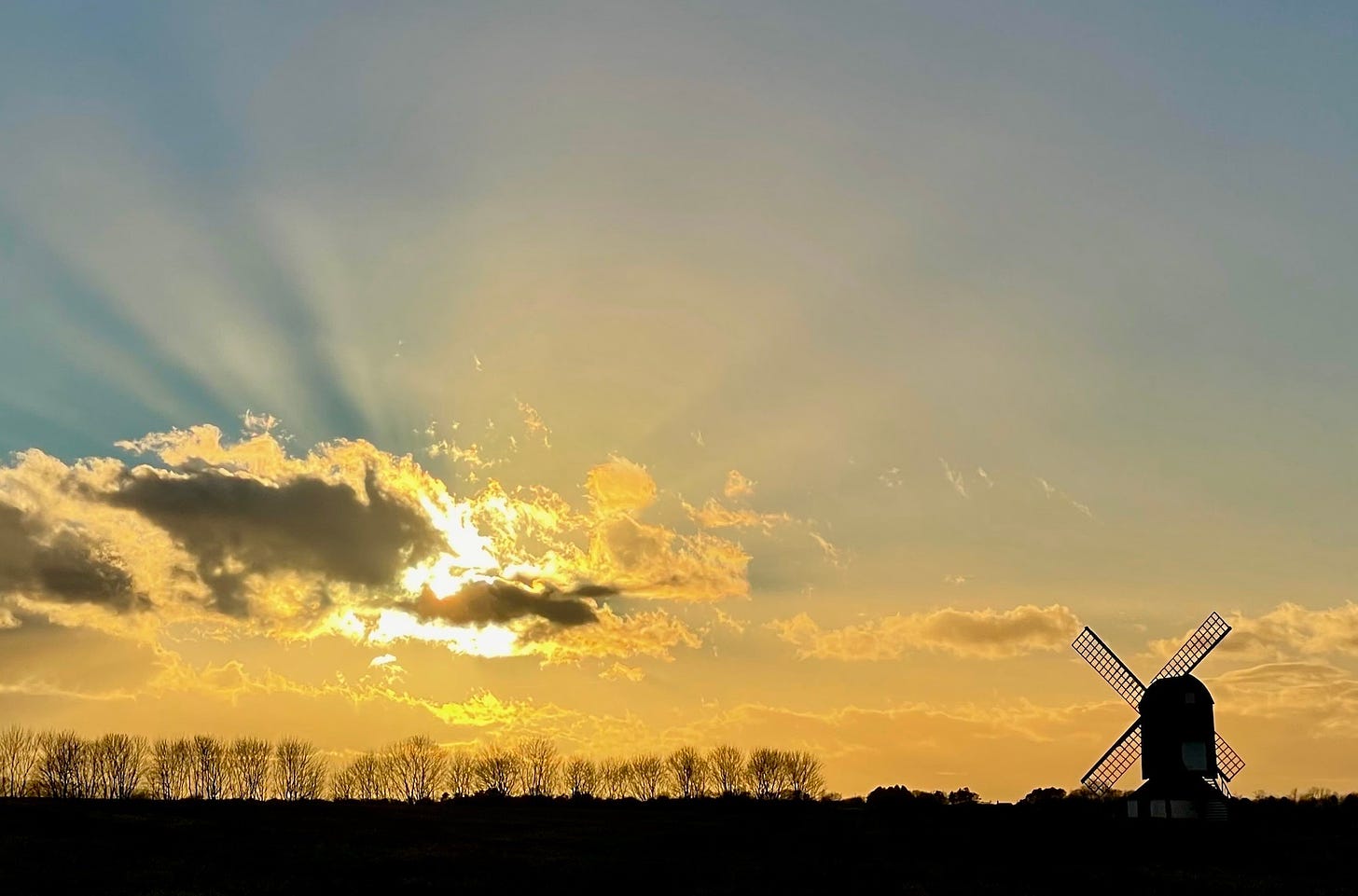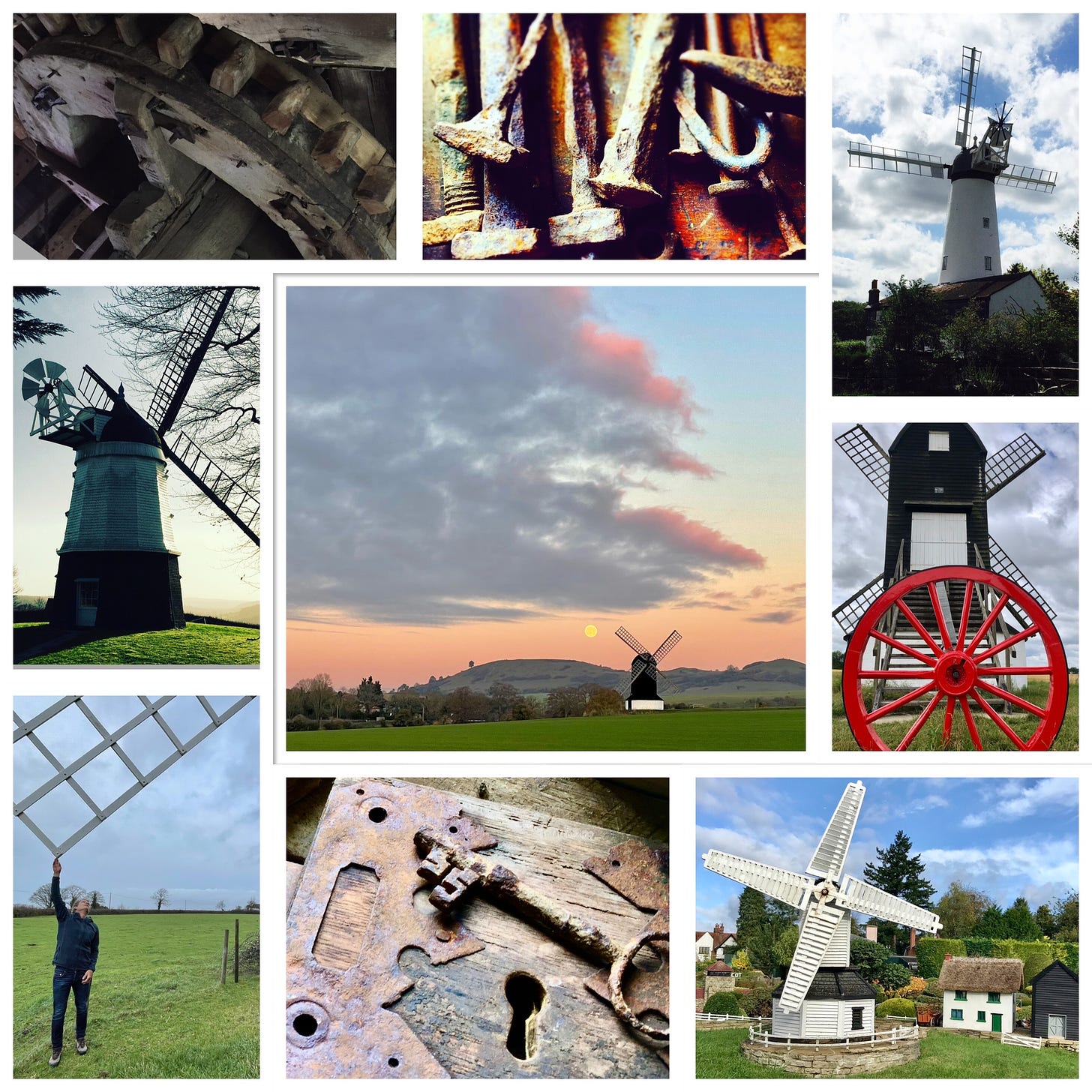Gentle Giants
Landscape plays a huge role in determining the form and function of buildings, not least windmills and watermills.
Once key to our food supply, almost every town and village had a mill. Part industrial site, dwelling and community hub, these amazing structures are a celebration of a former life and skills lost.
By coincidence, I have just spent the weekend in a beautiful 18th century watermill in the Yorkshire Dales, on a site chosen for the powerful River Ure that flows nearby.
Situated on inland waterways, in busy market towns or on a windy bluff, mills once provided particular services to local communities that farmed grains to be milled, sheep to be washed or silk to be spun. Some still command the landscape, the location purposefully chosen for exposure to the elements. Many are only remembered in archives, others have found new purpose, whilst the best have been lovingly and painstakingly restored by enthusiastic volunteers and can be visited at certain times of the year.
The reasons they were built may be long gone, but there are often subtle reminders of lost buildings in street names for example, or from soapwort still growing nearby (used as a natural soaping agent).
Here are my Chiltern favourites
The landmark Cobstone Windmill was built around 1816 and overlooks Turville village. It was a working smock mill, so-called as it has the shape of the farmers smock, replaced the original mill that had stood there since the 16th century. It was grinding cereals until 1873, but it was not until 1967, and the filming of Chitty Chitty Bang Bang, that the mill was cosmetically restored. It is a private residence, but worth the climb to the top of the hill to feel the wind in your face and appreciate the force that once turned the sails. The views are pretty good too!
The 300-year old Lacey Green Windmill stands on the Chilterns escarpment near Princes Risborough. It is possibly the most famous for being England’s oldest smock mill, with wooden machinery dating from around 1650. It was left in a terrible state of repair, but since 1971 it has been restored to working order by the Chiltern Society.
Pitstone Windmill is a rare and striking example of an early form of post mill, and is one of the oldest surviving windmills in Britain. It stands exposed beneath Ivinghoe Beacon and ground flour for the nearby villages for almost three hundred years, until a freak storm in the early 1900s left it badly damaged. Donated to the National Trust, it has been restored by a team of local volunteers. You can still see the bright red tail pole, which the miller had to wrestle with to turn the huge structure to face the wind.
Ford End Watermill at Ivinghoe was recorded in 1616, but is certainly much older, and remained in use until 1963. It retains all the atmosphere of a small 18th century farm mill and has an unusual feature; a sheep-wash in the tailrace below the mill that made the fleece easier to shear and so increased its value. The stoneground wholemeal flour is on sale during milling demonstrations.
I sometimes wonder where we’d be without the army of volunteers that keep the wheels (and sails) turning. They are the thread through all these impressive structures that have been rebuilt and are now kept (mostly) open for us to admire and marvel.
Links you will need
This post is dedicated to friend and master craftsman Kimon, who is working with the skilled team to restore the historic Mostert Mill in Cape Town that was so badly damaged in a fire in 2021.
Is it possible to bring millwrighting back from the brink? Mildred Cookson, Chair of the SPAB Mills Section, reflects on how millwrighting has changed and how we could pull this critically endangered craft back from the brink.
You don’t need to be an anorak to visit one of many mills open during then annual National Mills weekend in England, Scotland, Wales and Northern Ireland.
Turville has enjoyed a starring role in popular films and mini-series. In 1871 it was the scene of a national cause célèbre. Read about the Sleeping Girl and her deception.
All the images in these newsletters are copyright of Mary Tebje. If you wish to use any, or to improve your own photography, please get in touch in the usual way. You can also find me @ChilternHills on Instagram.




